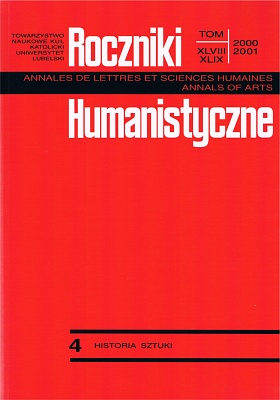Iconography of Chapter XII of St. John’s Revelation on the Angers tapestry
Abstract
The tapestry with presentations of St. John's Apocalypse that is at present exhibited in a special gallery in the Angers castle is an extraordinarily interesting work, exceptional because of its technique, monumental size and the fact that its iconography is a transposition of the miniature programme. The series of six tapestries ordered by Louis I, Duke of Anjou, was designed in the years 1373-1382 by the King of France Charles V's court painter, Jean Boudolf, and it was produced in the Paris textile workshop under the supervision of Nicolas Bataille.
There is no doubt that the iconography of the Apocalypse of Angers has its origin in miniatures. The programme of the tapestry reveals a connection with illustrations of the so-called „second family” of manuscripts of English-French apocalypses; miniatures from the Burckhardt-Wildt collection are the closest analogy, as has been proven by George Henderson.
Not all researchers emphasised the original character of the presentations in the Apocalypse of Angers in the same degree. In looking for the origin of the tapestry's programme attention was paid rather to similarities to particular series of miniatures than to differences. So far no work has been devoted to a detailed analysis of this work's iconography.
The present article is an attempt at a closer analysis of several scenes from the fourth of the six parts of the tapestry that refer to Chapter XII of the Revelation, that is ones that illustrate the history of the Woman and the Dragon. A comparison with analogous book illustrations allowed pointing to those elements that the author had borrowed from the tradition of presentation formed in the Gothic series of Apocalypse as well as to his individual contribution. We also tried to explain the meaning of the new iconography of the Apocalypse that was formed in the middle of the 13th century, and especially its relation to the commentaries by Berengaudus of Ferrieres, which allows a better understanding of some motifs that do not occur in the very text by St. John.
Copyright (c) 2001 Roczniki Humanistyczne

This work is licensed under a Creative Commons Attribution-NonCommercial-NoDerivatives 4.0 International License.





